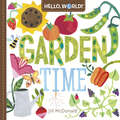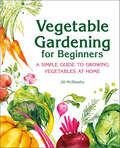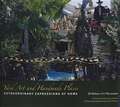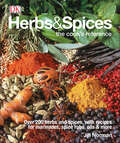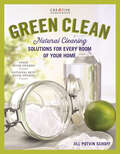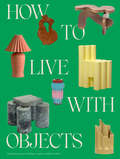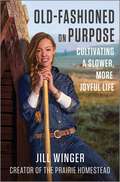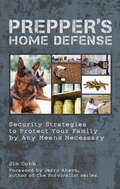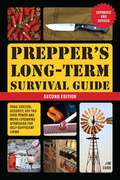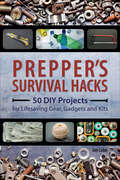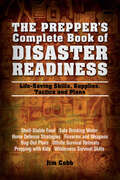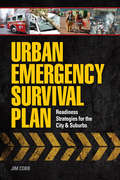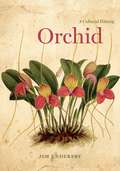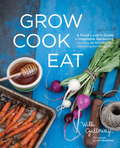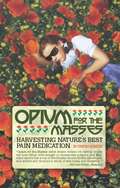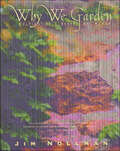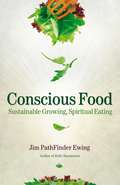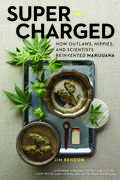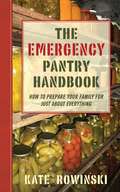- Table View
- List View
A Very Young Gardener
by Jill KrementzText and photographs feature highlights of the gardening year as six-year-old Ashley grows flowers and vegetables in her garden, looks at native plants in the woods, and visits a botanical garden. Other books by Jill Krementz are available in this library.
Hello, World! Garden Time (Hello, World!)
by Jill McDonaldLearn from home and explore the world with these fun and easy board books!This cheerful and informative Hello, World! board book teaches toddlers all about gardens—with easy-to-understand facts about how plants grow and how gardening puts food on our tables.Hello, World! is a series designed to introduce first nonfiction concepts to babies and toddlers. Told in clear and easy terms ("Roots spread into the soil below, and then a shoot pushes up out of the earth") and featuring bright, cheerful illustrations, Hello, World! makes learning fun for young children. And each sturdy page offers helpful prompts for engaging with your child. It's a perfect way to bring science and nature into the busy world of a toddler, where learning never stops.Look for all the books in the Hello, World! series: • Solar System• Weather• Backyard Bugs• Birds• Dinosaurs• My Body• How Do Apples Grow?• Ocean Life• Moon Landing• Pets• Arctic Animals• Construction Site• Rainforest Animals• Planet Earth • Reptiles• Cars and Trucks • Music• Baby Animals• On the Farm• Garden Time• Planes and Other Flying Machines• Rocks and Minerals• Snow
Vegetable Gardening for Beginners: A Simple Guide to Growing Vegetables at Home
by Jill McSheehyGrow a flourishing vegetable garden this summer with the ultimate guide to gardening for beginners.Gardeners never forget the first time they enjoyed a ripe, juicy tomato plucked straight from the vine or savored a crisp, fresh salad made with ingredients from their backyard. Start growing your first crop today with Vegetable Gardening for Beginners. Taking up vegetable gardening can be a worthwhile summer activity, and an ideal summer hobby for people of all ages.Host of The Beginner's Garden podcast Jill McSheehy offers simple guidance to first-time gardeners who will be amazed at how easy it can be to create a thriving garden.Build the ideal foundation with clear instructions for constructing raised beds, preparing containers, and mixing healthy soil.Pick the perfect plants with in-depth profiles that detail how to grow beloved culinary plants, from peppery arugula to cool melons and fragrant rosemary.Nurture a budding garden with this reference for pairing up companion plants, watering and mulching, handling pests, and maintaining plants year-round.Start your own vegetable garden with the easy-to-follow guidance from Vegetable Gardening for Beginners.
Yard Art and Handmade Places: Extraordinary Expressions of Home
by Jill Nokes Pat JasperRelatively few people in America build their own homes, but many yearn to make the places they live in more truly their own. Yard Art and Handmade Places profiles twenty homemakers who have used their yards and gardens to express their sense of individuality, to maintain connections to family and heritage, or even to create sacred spaces for personal and community refreshment and healing. Jill Nokes, an authority on native plants and ecological restoration, traveled across the state of Texas, seeking out residents who had transformed their yards and gardens into oases of art and exuberant personal expression. In this book, she presents their stories, told in their own words, about why they created these handmade places and what their yard art has come to mean to them and to their communities. Rather than viewing yard art as a curiosity or oddity, Nokes treats it as an integral part of home-making, revealing how these places become invested with deep personal or social meaning. Yard Art and Handmade Places celebrates the fact that, despite the proliferation of look-alike suburbs, places still exist where people with ordinary means and skills are shaping space with their own hands to create a personal expression that can be enjoyed by all.
Herbs & Spices: Over 200 Herbs and Spices, with Recipes for Marinades, Spice Rubs, Oils, and Mor
by Jill NormanThe first illustrated guide to cover the whole spectrum of herbs and spices for culinary use. Herbs & Spices is an indispensable reference that shows how to prepare fresh and dried herbs, how to use herbs and spices in cooking, and details everything that other books on the subject leave out. Containing a unique collection of recipes, from herb and spice mixes to rubs, pastes, salsas, and marinades, these authentic formulas will encourage cooks to think creatively and experiment on their own. Grouped by aroma and taste, with step-by-step preparation techniques and beautiful full-color photography, this book describes 60 herbs and the benefits of using them fresh or dried, and focuses on 60 spices from around the world, with a look at the early spice trade and how cross-cultural fusion has impacted on contemporary cooking.
Homelessness and the Built Environment: Designing for Unhoused Persons
by Jill Pable Yelena McLane Lauren TrujilloHomelessness and the Built Environment provides a practical introduction to the effective physical design of homes and other facilities that assist unhoused persons in countries identified as middle- to high-income. It considers the supportive role that design can play for unhoused persons and other users and argues that the built environment is an equal partner alongside other therapies and programs for ending a person’s state of homelessness. By exploring issues, trends, and the unique potential of built environments, this book moves the needle of what is possible to assist people experiencing trauma. Examining important architectural and interior architectural design considerations in detail within emergency shelters, transitional shelters, permanent supportive housing, day centers, and multi-service complexes such as space planning choices, circulation and wayfinding, visibility, lighting, and materials and finishes, it provides readers with both curated conclusions from empirical knowledge and experienced designers’ perspectives. Homelessness and the Built Environment is an imperative and singular reference for interior designers, architects and building renovation sponsors, design researchers and students forging new discoveries, and policy makers who seek to assist communities affected by homelessness.
Green Clean: Natural Cleaning Solutions for Every Room of Your Home
by Jill Potvin SchoffA guide to environmentally safe cleaning techniques and products to keep you and your family safe from household toxins. This eco-friendly handbook explains how to eliminate toxic chemical household cleaning agents from your life and replace them with natural, homemade solutions. Inspired by the author's experience as the mother of an allergic child, Green Clean provides practical, comprehensive advice for every household cleaning need from kitchen, bathroom, and laundry to windows, floors, grills, decks, and cars. Jill Potvin Schoff shows how to green up your chores and reduce your family&’s exposure to hazardous chemicals. Using safe, effective and inexpensive ingredients and recipes, she offers simple cleaning methods and smart tips that will keep both you and the environment healthy.
How to Live with Objects: A Guide to More Meaningful Interiors
by Monica Khemsurov Jill SingerFrom the editors of Sight Unseen, an anti-decorating book that champions a new approach to interiors—simply surrounding yourself with objects you love.&“A refreshing, and necessary, counternarrative to shop-this-look consumerism and the aesthetic sameness that afflicts so many interiors.&”—VultureIn the modern home, it matters less whether your interior is perfectly appointed and more if it&’s authentically personal, unique, and filled with the objects you feel a connection to. Through inspiring home tours and practical advice on how and what to collect, Sight Unseen editors Monica Khemsurov and Jill Singer take you on an educational and highly visual journey through the questions at the core of their design philosophy: • What makes an object worth having?• How do our objects impact our lives? Khemsurov and Singer guide collectors, design lovers, and novices alike toward a more intentional and skilled mindset in acquiring and living with objects. The book acts as a detailed primer on how to maximize the visual and emotional impact of your space, regardless of your space limitations, style preferences, or budget. From a deep dive into the world of vintage-hunting to anecdotes about favorite objects from creatives like Misha Kahn and Lykke Li to expert styling tips, How to Live with Objects is an indispensable tool for anyone who wants to make their house a home.
Old-Fashioned on Purpose: Cultivating a Slower, More Joyful Life
by Jill Winger"In a world where so many of us are craving a life of simplicity and meaning, Old-Fashioned on Purpose gives you the roadmap to rediscovering what really matters." —Hal Elrod, bestselling author of The Miracle Morning With a foreword from singer, songwriter, and New York Times bestselling author Rory FeekCreator of The Prairie Homestead blog and the Old-Fashioned On Purpose podcast Jill Winger reveals that the secrets to finding happiness today is by turning to the lost arts of the past When the pandemic hit in 2020, flour and vegetable seeds flew off the shelves. But homesteader and entrepreneur Jill Winger believes these longings for sourdough bread and fresh veggies are more than a trend. As our society races toward progress, we&’ve left something important behind. We are more connected than ever before, yet we&’re still feeling unfulfilled. In Old-Fashioned on Purpose, Winger shows how simplifying our lives and adopting retro skills such as gardening and handiwork can be the key to creating the happy and healthy life we&’re yearning for. Inside these pages, readers will learn: How to find joy in the kitchen (even if you hate to cook) Proven strategies for growing your own groceries The surprising stress-relievers that can be found in your backyard How to craft a more grounded routine and save money in the process Clever tips and creative DIYs to help you embark on your old-fashioned journey You don&’t have to live on a farm to cultivate a simpler life. This inspiring and practical book offers a powerful new sense of purpose, with plenty of tomatoes, chickens, and bread making along the way.
Prepper's Home Defense: Security Strategies to Protect Your Family by Any Means Necessary (Preppers)
by Jim CobbDeter, delay, defend—a guide to building and maintaining security when civilization breaks down.Does your disaster preparation plan include security measures? When civilization fails and the desperate masses begin looting, they will come for your food, water, and life-sustaining supplies. This book shows you how to implement a complete plan for operational security and physical defense, including:• Perimeter Security Systems and Traps• House Fortifications and Safe Rooms• Secured and Hidden Storage• Firearms and Defensive Combat Techniques• Gathering Intelligence and Forming Alliances
Prepper's Long-Term Survival Guide, 2nd Edition: Food, Shelter, Security, Off-the-Grid Power and More Life-Saving Strategies for Self-Sufficient Living (Expanded and Revised) (Books for Preppers)
by Jim CobbA Simon & Schuster eBook. Simon & Schuster has a great book for every reader.
Prepper's Survival Hacks: 50 DIY Projects for Lifesaving Gear, Gadgets and Kits (Preppers)
by Jim CobbDiscover ingenious tips, tricks and techniques for turning ordinary objects into survival gear from the author of Prepper’s Communication Handbook.When a catastrophic event strikes, you’ll need to rely on your skills and supplies to keep you alive. This book teaches you how to improvise solutions for the scarcities, deficiencies, and dangers that will arise in a worst-case scenario.Prepper’s Survival Hacks offers a wide range of creative ideas for transforming cheap and widely available items into life-saving gear:Harvest water in a transpiration bagCatch food with a pocket fishing kitCook using a handy hobo stoveCraft quick fire starters in an egg cartonMake a mini oil lamp using a mint tinAssemble a survival kit in a belt pouch
The Prepper's Complete Book of Disaster Readiness: Life-Saving Skills, Supplies, Tactics and Plans (Preppers)
by Jim CobbMake sure your survival plan is complete from A to Z with this comprehensive disaster prep guide. When preparing to face a disaster scenario, details can mean the difference between life and death. If you overlook one vital area, fail to stock one supply or underestimate one potential danger, your whole plan could come crashing down. The Prepper&’s Complete Book of Disaster Readiness guarantees you won&’t miss a thing as you prepare to face the most critical challenges. This bible of prepping shows each and every life-saving step necessary to keep your family alive and well when the world around you is in chaos, including how to: • Efficiently store water and acquire additional fresh water after a collapse • Build a shelf-stable food stock and supplement it by harvesting edible wild plants • Strengthen the security of your home as well as have a back-up bug-out plan • Treat illness and stay healthy when there are no doctors or hospitals • Build a safe and secure survival retreat that allows for long-term off-the-grid living
Urban Emergency Survival Plan: Readiness Strategies for the City and Suburbs
by Jim CobbStay Safe in the City Here's the book that won't advise you to flee the city and set up a homestead to avoid potential disasters. With many other survival-planning resources emphasizing that approach, urban dwellers that plan to stay put in the city, no matter the circumstances, have been overlooked. Not only do 58 percent of Americans live in cities, but certain risks are higher in cities than elsewhere. Urban Emergency Survival Plan delivers a common-sense approach to urban survival planning rather than advocating that city survivalists need to figure out a way to grow an acre of food, raise goats, and build an underground bunker. The clearly outlined approach here will help you to reduce the risks inherent in disasters that occur in well-populated areas. Inside you'll find: Packing lists for get-home bags, everyday carry items for adults and kids and bug-out bags An overview of threats that face an urban area and instructions for planning safe travel during and after disasters, as well as how to plan a temporary escape Instructions for sheltering in place at work Chapters on food storage and water procurement in urban areas with emphasis on limited space and budget A detailed chapter on security options in urban areas A detailed chapter on sanitation, first aid and shelter Ideas for how to respond and cooperate with government disaster plans Photos of important survival gear Discover the skills you'll need to weather any storm, whether you live in an apartment, townhouse, condominium, single-family home or any other urban setting. With planning and practice, you'll gain the confidence to always feel safe in the city.
Orchid: A Cultural History
by Jim EndersbyAt once delicate, exotic, and elegant, orchids are beloved for their singular, instantly recognizable beauty. Found in nearly every climate, the many species of orchid have carried symbolic weight in countless cultures over time. The ancient Greeks associated them with fertility and thought that parents who ingested orchid root tubers could control the sex of their child. During the Victorian era, orchids became deeply associated with romance and seduction. And in twentieth-century hard-boiled detective stories, they transformed into symbols of decadence, secrecy, and cunning. What is it about the orchid that has enthralled the imagination for so many centuries? And why do they still provoke so much wonder? Following the stories of orchids throughout history, Jim Endersby divides our attraction to them into four key themes: science, empire, sex, and death. When it comes to empire, for instance, orchids are a prime example of the exotic riches sought by Europeans as they shaped their plans for colonization. He also reveals how Charles Darwin's theory of evolution became intimately entangled with the story of the orchid as he investigated their methods of cross-pollination. As he shows, orchids--perhaps because of their extraordinarily diverse colors, shapes, and sizes--have also bloomed repeatedly in films, novels, plays, and poems, from Shakespeare to science fiction, from thrillers to elaborate modernist novels. Featuring many gorgeous illustrations from the collection of the Royal Botanic Gardens, Kew, Orchid: A Cultural History tells, for the first time, the extraordinary story of orchids and our prolific interest in them. It is an enchanting tale not only for gardeners and plant collectors, but anyone curious about the flower's obsessive hold on the imagination in history, cinema, literature, and more.
How to Buy the Right Plants, Tools, and Garden Supplies: Find The Pruners That Will Last A Lifetime Choose The Best Mulch For Your Garden Pick The Shovel That's Right For You Spot The Healthy Perennials
by Jim FoxAre you confused by all the choices when you visit a nursery? Do you get sticker shock when you see how much that nice little shade tree costs? Let Jim Fox, a nursery professional with over twenty years of experience, show you how to become a savvy garden consumer and get the most for your hard-earned landscaping dollars. <P><P>How to Buy the Right Plants, Tools, and Garden Supplies will arm you with a wealth of knowledge! You’ll learn how to determine if a plant is healthy, how to choose the right size, how to correctly read the plant tag, how to choose the best tools and supplies for your needs, and how to confidently recognize a well-made tool. <P><P> In addition to helping you navigate the nursery, it tells you what you need to know before you get there and offers helpful tips on how to successfully garden once you get home.With this essential guide in hand, you’ll never experience buyer’s remorse again!
Grow Cook Eat
by Jim Henkins Willi GallowayFrom sinking a seed into the soil through to sitting down to enjoy a meal made with vegetables and fruits harvested right outside your back door, this gorgeous kitchen gardening book is filled with practical, useful information for both novices and seasoned gardeners alike. Grow Cook Eatwill inspire people who already buy fresh, seasonal, local, organic food to grow the food they love to eat. For those who already have experience getting their hands dirty in the garden, this handbook will help them refine their gardening skills and cultivate gourmet quality food. The book also fills in the blanks that exist between growing food in the garden and using it in the kitchen with guides to 50 of the best-loved, tastiest vegetables, herbs, and small fruits. The guides give readers easy-to-follow planting and growing information, specific instructions for harvesting all the edible parts of the plant, advice on storing food in a way that maximizes flavor, basic preparation techniques, and recipes. The recipes at the end of each guide help readers explore the foods they grow and demonstrate how to use unusual foods, like radish greens, garlic scapes, and green coriander seeds.
Opium for the Masses
by Jim Hogshire"Contrary to general belief, there is no federal law against growing P. somniferum."--Martha Stewart Living"Regarded as 'God's own medicine,' preparations of opium were as common in the Victorian medicine cabinet as aspirin is in ours. As late as 1915, pamphlets issued by the U.S. Department of Agriculture were still mentioning opium poppies as a good cash crop for northern farmers. Well into this century, Russian, Greek, and Arab immigrants in America have used poppy-head tea as a mild sedative and a remedy for headaches, muscle pain, cough, and diarrhea. During the Civil War, gardeners in the South were encouraged to plant opium for the war effort, in order to ensure a supply of painkillers for the Confederate Army. What Hogshire has done is to excavate this vernacular knowledge and then publish it to the world--in how-to form, with recipes."-- Michael PollanFirst published fifteen years ago, Opium for the Masses instantly became a national phenomenon. Michael Pollan wrote a lengthy feature ("Opium, made easy") about Jim Hogshire in Harper's Magazine, amazed that the common plant, P. somniferum, or opium poppies, which grows wild in many states and is available at crafts and hobby stores and nurseries, could also be made into a drinkable tea that acts in a way similar to codeine or Vicodin.With Opium for the Masses as their guide, Americans can learn how to supplement their own medicine chest with natural and legal pain medicine, without costly and difficult trips to the doctor and pharmacy.
Why We Garden: Cultivating a Sense of Place
by Jim NollmanThe spirit of gardening is a deepening connection with nature that transforms the gardener into an adventurer encountering lessons great and small. Author Jim Nollman sees the connection to the garden as the space in which a genuine healing relationship between person and place can be formed.Why We Garden is full of helpful tips from Nollman's decades of gardening experience, along with the Zen of gardening--the sense of place and purpose and what tending the land means to us. A beautifully written gem for the gardener seeking the simplicity and spirit of the land and a gift for all who are stewards of the earth.
Conscious Food
by Jim Pathfinder EwingWhen did growing and eating food cease to be considered sacred? How did food lose its connection with health? Why is our food system out of control? What simple steps can we each take to profoundly change our world as a healthier place for us all? Journalist, author Jim PathFinder Ewing answers these and other questions with his new book, Conscious Food: Sustainable Growing, Spiritual Eating. Ewing provides a background on the emergence of agriculture and the declining connection with food as society evolved, particularly during times of war, and scrutinizes today's "conventional" farming that relies upon deadly toxins and unsustainable fossil fuels. The book outlines how modern people can avoid being victims of biocultural evolution and the resultant entropy of declining global and personal health - and instead contribute to the movement toward mindful food choices and better world health, both physically and spiritually. Ewing discusses how society can nurture the unseen Spirit world that permeates plants through adopting nondenominational spiritual understandings, and includes how-to examples for growing organic food and fostering a supportive community and urban agriculture, as well as notes for expanded resources.
Reading About - My Home
by Jim PipeThe Reading About series introduces early readers to non-fiction. Each book is designed to increase reading fluency and combines a narrative text, accessible language and an easy-to-follow format.
Furniture Design
by Jim PostellThe comprehensive guide to furniture design— expanded and updated Furniture designers draw on a range of knowledge and disciplines to create their work. From history to theory to technology, Furniture Design offers a comprehensive survey of the essential craft- and practice-related aspects of furniture design. Generously illustrated with photographs and drawings—including a new color section—this Second Edition features updated coverage of material specifications, green design, digital design, and fabrication technologies. It also features twenty-five case studies of furniture design that represent a broad selection of works, designers, and techniques, including recent designs produced within the last decade. The book explores: Furniture function and social use Form, spatial organization, and typological orders Structural integrity and composition Accessibility, universal design, human factors, and ergonomics The design process, from schematics through fabrication Materials, processes, and methods of fabrication Professional practice and marketing The history of furniture design, from prehistory to the digital age Complete with a glossary of terms and a comprehensive bibliography, Furniture Design, Second Edition is a one-stop resource that furniture designers will turn to regularly for the advice, guidance, and information needed to perform their craft.
Materiality and Interior Construction
by Nancy Gesimondo Jim PostellA comprehensive reference of materials for interior designers and architects Choosing the right material for the right purpose is a critical-and often overlooked-aspect in the larger context of designing buildings and interior spaces. When specified and executed properly, materials support and enhance a project's overall theme, and infuse interior space with a solid foundation that balances visual poetry and functionality. Materiality and Interior Construction imparts essential knowledge on how materials contribute to the construction and fabrication of floors, partitions, ceilings, and millwork, with thorough coverage of the important characteristics and properties of building materials and finishes. Individual coverage of the key characteristics of each material explores the advantages and disadvantages of using specific materials and construction assemblies, while helping readers discover how to make every building element count. In addition, Materiality and Interior Construction: Is highly illustrated throughout to show material properties and building assemblies Supplies rankings and information on the "green" attributes of each material so that designers can make informed decisions for specifications Is organized by application for easy and quick access to information Includes a companion website, featuring an extensive online image bank of materials and assemblies Rather than a typical catalog of materials, Materiality and Interior Construction is efficiently organized so that the reader is guided directly to the options for the location or assembly they are considering. Reliable and easy to use, Materiality and Interior Construction is a one-stop, comprehensive reference for hundreds of commonly used materials and their integration as building components-and an invaluable resource that every interior designer or architect should add to their set of tools.
Super-Charged: How Outlaws, Hippies, and Scientists Reinvented Marijuana
by Jim RendonMarijuana has been illegal in the United States since 1937. Yet, thanks in large part to a loosely connected underground world of breeders, dealers, and smokers, there are currently more than 2000 varieties available. And since 1996, when California first passed legislation allowing for legalized medical marijuana, the underground has slowly surfaced, pushing what was once a decentralized, lawless world closer to the corporate world of business, agriculture, and pharmaceuticals. Super-Charged gets up close and personal with the people who have transformed this controversial drug. With personalities and backgrounds as diverse as the plant itself, the growers include a former Silicon Valley software entrepreneur; third-generation Humboldt, California, growers; a publicly traded pharmaceutical company; and the famous marijuana personality Jorge Cervantes. Jim Rendon takes readers behind the scenes and into the homes and grow operations of the committed, quality-obsessed practitioners in the international underground industry responsible for creating today's super-charged cannabis. Ironically, these pioneers who built this illegal industry may one day find themselves out of business in the face of the drug's growing mainstream acceptance. Just how this could come about is part of the incredible story.
The Emergency Pantry Handbook: How to Prepare Your Family for Just about Everything
by Kate Rowinski Jim RowinskiIn today’s world, anything can happen—medical emergencies, power outages, natural disasters. In less time than it takes to sign off on an insurance form, the world as we know it can be brought to a standstill. There can be no question: It’s best to be prepared. The Emergency Pantry Handbook by cooking expert and readiness enthusiast Kate Rowinski offers tips, techniques, and advice on how to keep your family safe, well-fed, and fully supplied in the event of any crisis. With simple instructions, Rowinski demonstrates how to create an emergency strategy; how to protect your house, documents, and keepsakes; and how to prepare for specific disasters. Offering a unique twist on preparation handbooks, Rowinski focuses on food storage and cooking—put simply, how to plan nutritional emergency meals and avoid “making due” on canned meats and chocolate bars. The Emergency Pantry Handbook details:· Storage techniques · Personalizing your food plan · Stockpiling, shelf life, and rotation · Pickling, canning, sprouting, and drying · Making delicious dinners out of your storage pantry Whether a disaster lasts for twenty-four hours or twenty-four weeks, The Emergency Pantry Handbook is the ultimate guide to keeping your family eating healthily and maintaining proper nutrition, even in the worst of circumstances.

